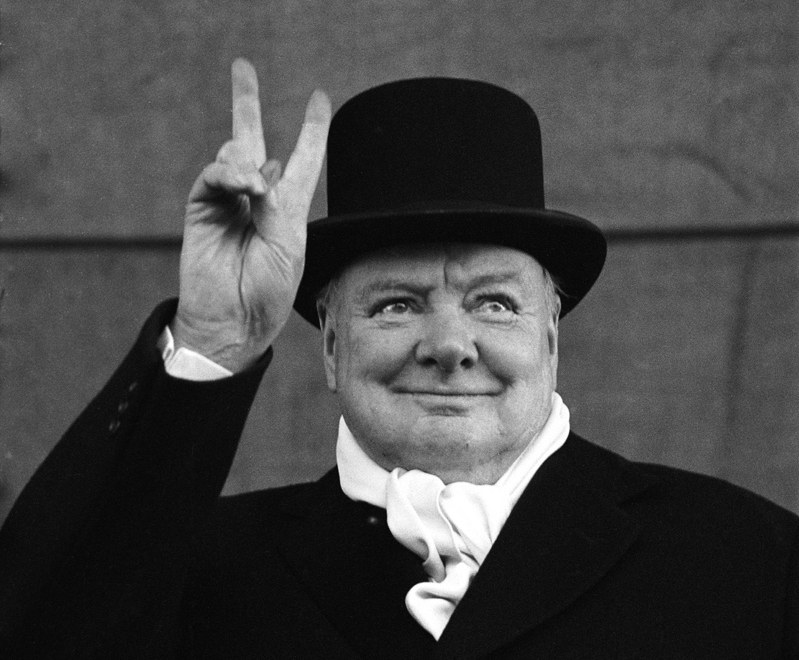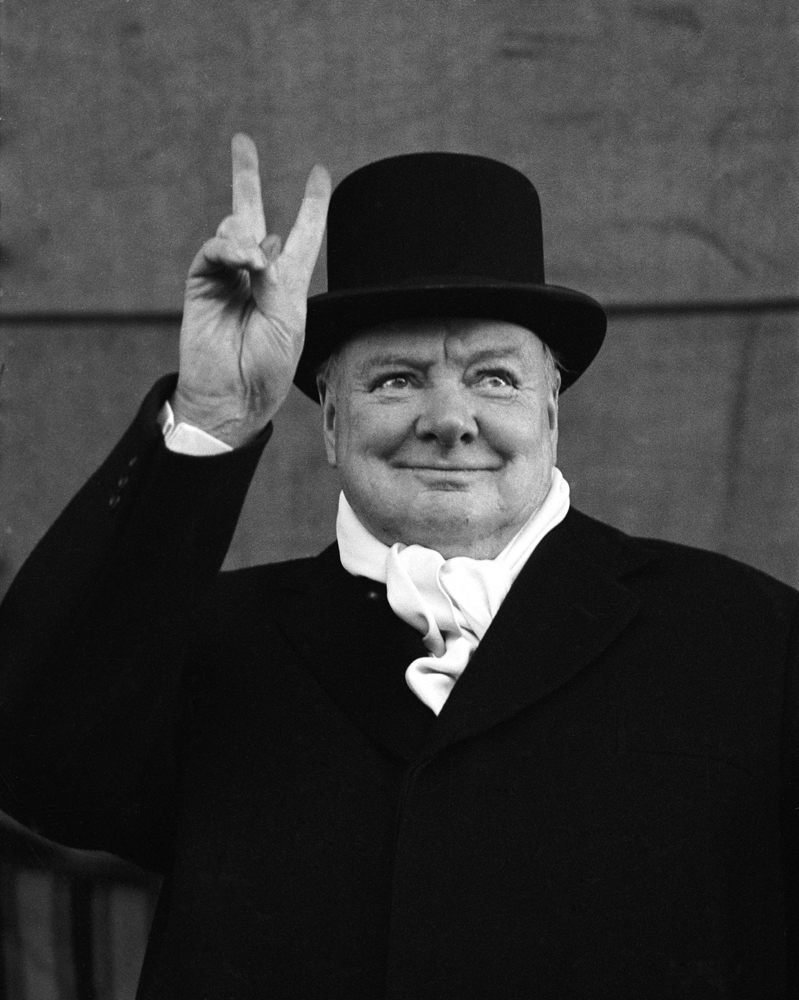
Today, the hand gesture above—index and middle finger extended, palm outward—is as innocuous and ubiquitous a token of greeting or farewell as one is likely to see, anywhere. In fact, one would be hard-pressed to find a group portrait of youngsters, grown-ups, teens—in any culture—where at least one person in the photo is not flashing what most of us know as a “peace sign.”
The redoubtable fellow above, however, is hardly a hippie, and in his hands the symbol is far more freighted than a laid-back, “Peace, man.” He is, of course, Winston Churchill, the British Prime Minister who guided England through the darkest days of World War II—especially when Great Britain effectively stood alone against the forces of the Reich, which had overrun the rest of Europe. (Churchill was not knighted until 1953, and so was not “Sir Winston Churchill” until after the war—indeed until after LIFE’s Alfred Eisenstaedt made this photo in 1951.)
Churchill, of course, is probably the one historical figure most closely identified with the “V for Victory” sign in use among the Allies for much of the war. Another Briton, Ringo Starr, is famous today for throwing out the symbol, as a peace sign, in any and every imaginable situation; but it was Churchill who first made it his own.
Here, on the anniversary of the day—July 19, 1941—when Churchill first endorsed the “V for Victory” effort in a speech to his compatriots, LIFE.com celebrates the gesture as one of those unlikely strokes of genius that, while by their very nature symbolic, occasionally serve to unite and inspire millions. It’s also worth noting, in passing, that employing the “V” sign as a gesture of defiance and solidarity was first suggested in January 1941 by the liberal Belgian politician, Victor de Laveleye. He encouraged the use of the symbol because V stood for both victoire (“victory” in French) and vrijheid (“freedom” in Dutch).
Finally, we should point out that when Churchill—the son of a British Lord and an American mother from a family of enormous wealth—first began using the V sign in public, he frequently held his hand with the knuckles facing outward, perhaps because he was so often clutching a cigar. His staff had to inform him that gesturing in that manner was the British working-class equivalent of flipping the bird. For the rest of the war, and the rest of his life, Churchill made sure that there could be no possible doubt about the message he meant to send with those two famous fingers.

More Must-Reads from TIME
- Why Trump’s Message Worked on Latino Men
- What Trump’s Win Could Mean for Housing
- The 100 Must-Read Books of 2024
- Sleep Doctors Share the 1 Tip That’s Changed Their Lives
- Column: Let’s Bring Back Romance
- What It’s Like to Have Long COVID As a Kid
- FX’s Say Nothing Is the Must-Watch Political Thriller of 2024
- Merle Bombardieri Is Helping People Make the Baby Decision
Contact us at letters@time.com